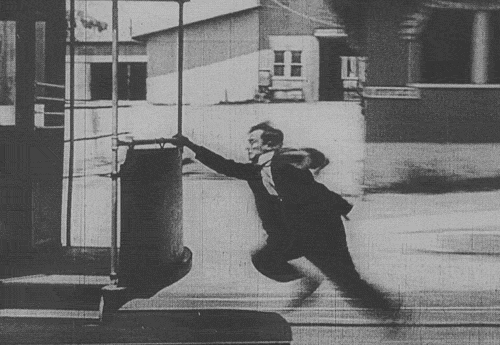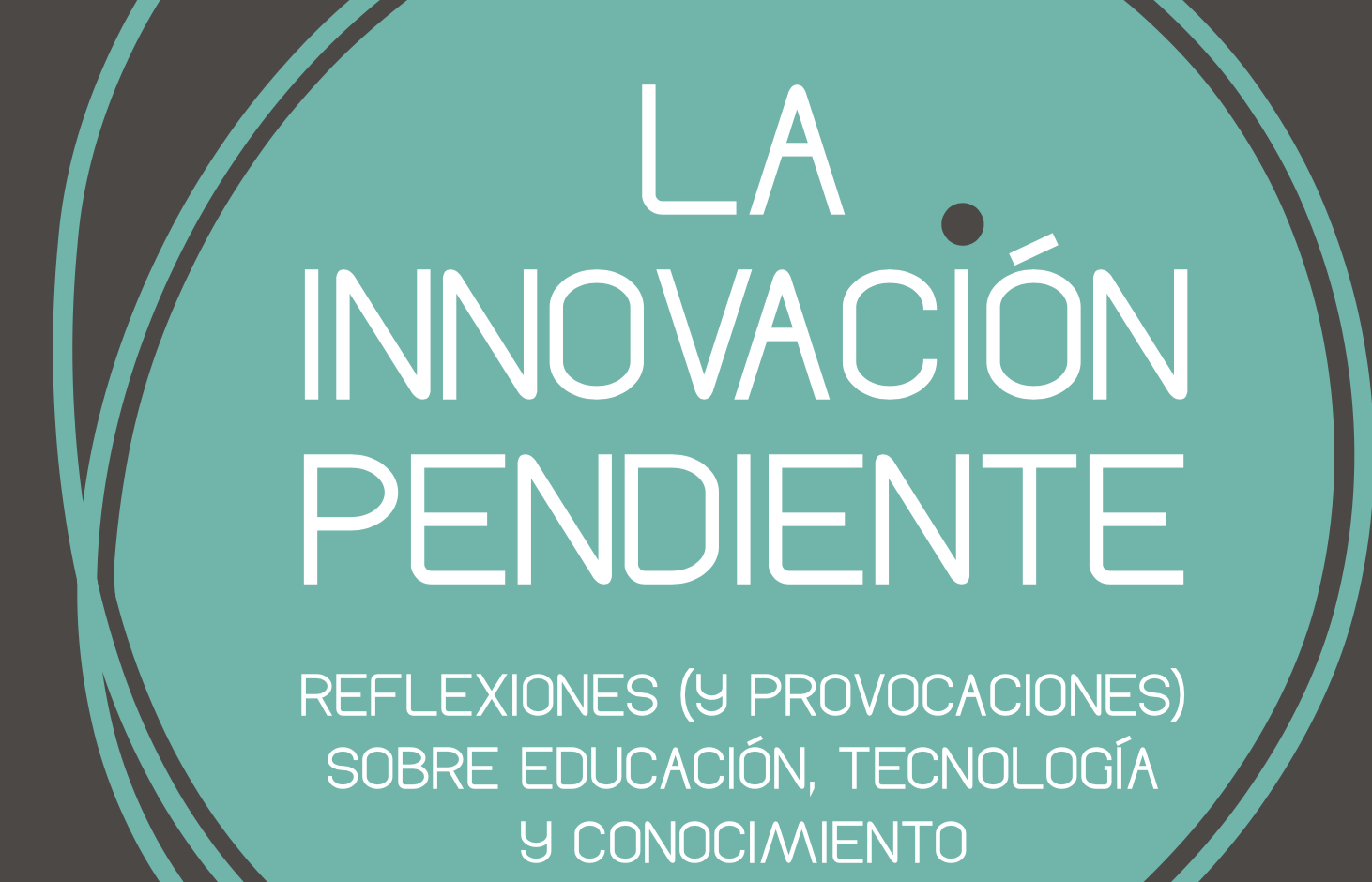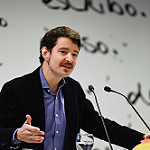Are we ready to jump?

[This interview is brought from the time machine into the COVID world] We talked with Cristóbal Cobo, senior education and technology specialist, former director of Studies Center Foundation Ceibal, who was research associate for ten years at the Oxford Internet Institute, and associate at the Center on Skills, Knowledge and Organisational Performance of the University of Oxford, England. In this conversation we explore more about the concept of “invisible learning” and technological disobedience.
How has education changed since the use of ICT in the classroom? Perhaps the most obvious change is related to the new possibilities of access to different sources of knowledge. However, one of the most interesting changes is related to new forms of building knowledge both with peers, as with other networks in a more distributed fashion. The possibility to negotiate knowledge from different sources and in different formats and languages illustrates one of the major transformations.
“Knowledge is continuous, is subject to obsolescence and in constant transformation, and it is produced in a decentralized manner. All this in a deeper transition process that redefines the value and role of schools, universities, educators and education in general.”
What would you change from the current educational model? I do not know if there is only one current model. Even within our educational institutions coexist different ways of teaching. Within the same organization are more restrictive models that focus on information transfer coexisting with more dialogic and flexible spaces. Despite this duality, teaching models are always undergoing reforms and changes in educational policies.
Moreover, in this knowledge society, learning is much more than models that regulate (indicators, rankings, quality standards, etc.). We would like to see more emphasis on educational models of ‘inclusive innovation’. One of the great challenges is to move innovation described at a high level in the educational policies to real practical adaptation that permeates into the classroom. One of the challenges is to move towards more dialogic forms and a greater degree of relevance (with teachers well trained who are open to experimentation and discovery, creativity and critical thinking, collaborative work, where it is understood that you can learn beyond the classroom, etc.). But for it to work is necessarily inclusive (non-exclusive). That is, not just for a few, but when we can impact a much broader sector of the population.
What does it mean for you “invisible learning”
Learning that transcends the curricular use of the devices and recognizes the processes of knowledge creation that also are generated beyond formal contexts.
“The invisible is not what does not exist, but what is not so evident.”
In cognitive terms, we have a significant amount of knowledge and skills that we can not express or simply recognize within the education systems. For example, it is easier to measure and recognize proficiency in a language (eg skill in using English or digital skills) than the creativity or curiosity of an individual. But that does not mean these capacities that are not recognized are not relevant. We have to create other ways to recognize and evaluate aspects that most of the time we ignore.
What is the role of technology when thinking in "invisible learning"?
Technologies are not an information box, as conceived in the mid-twentieth century with examples like “Memex” Vannevar Bush or the “teaching machine” from Frederic Skinner. But they are more similar to a pair of ‘goggles‘ for augmented reality that allows us to amplify and enrich knowledge and connect with different learning contexts.
“Increase the ability to see through different cognitive and cultural spaces is the role of these tools, when they are properly used.”
Much of this exploration (e.g. using these “goggles”) occurs outside of formal learning and that is where the invisible learning offers a different way of understanding technology.
What can we find in your book “Pending Innovation”?
This book (download introductory chapter in English) opens an exploration of what we might call a turning point in technological development. The tireless desire to consume technology in almost all areas of society has created false mirages. It seems that innovation is only on digital devices. However, everything suggests that structural changes are deeper and requires a (re) conceptualization of knowledge. For example, our ability to learn with technology does not seem particularly giddy (at least not at the speed of our expectations), however, we see that the (really) new technologies (machine learning) are beginning to develop "capacities" to learn. Even at an early stage, but that leads us to ask questions like: why these disruptions do not reach the classroom? What skills will be displaced if these data-intensive technologies begin to emerge and think on our behalf? And more importantly, if we innovate in technology why not do it in ways of assessing and recognizing knowledge?
Could you explain what do you understand by "technological disobedience"?
Some of the richer processes using technology have always emerged from scarcity, ie outside the institutions, beyond the preestablished set of common practices. They have been always driven by curiosity, exploration, problem-solving, alternative ways of exploring solutions (more information).
All movements associated with the free software communities are a clear example of this, of course Wikipedia or new collaborative tools. All are forms of technological disobedience. Challenging a technological use of a specific device or a way to use technology and take it for quite different ways. Today we propose to recover these principles of technological disobedience and bring them to the learning processes. Our main concern is that today the use of technology is very asymmetric and focused on consumption. That is, a few created (either technologies or content) and many consume what is created by others. This creates asymmetry and dependence that are not positive. Today is time to reverse this symmetry. We must strengthen the ability to create content and create new ways of understanding technology (learning new languages and in some cases create new technology).
” I hope someday new forms of technological disobedience are translated into platforms, tools and resources created by communities that are not the same as always (i.e. silicon valley), the peripheries of the knowledge society have a lot to contribute.”
You have taught at more than 20 universities … tell us an anecdote: P
I guess it’s happened to me a little of everything. Students in England and Peru have confused me with a classmate. In the early years in Mexico students they did not understand my Chilean accent and had to learn to speak without slang. In Spain a student said that he was against everything I said in my class (about education) and he persuaded all his classmates to leave the classroom. In Kazakhstan I was teaching my class in English, it was translated simultaneously in Kazakh and Russian and I was completely lost in four languages convergence. In a videoconference on the importance of digital technologies that dictated to the University of Minnesota and given via Skype…we had problems and I ended it up dictating the class by (landline) phone … Anyway, there are a few stories.
What trends are perceived in the future of education?
First, I think the distinction between online learning and presential tends to disappear. That is, the whole learning experience will be 100% hybrid combining both modes of learning.
In the second place I see clearly that there is a redefinition of the boundaries between formal and informal learning, since both are increasingly interdependent. Perhaps what is most evident is growing consensus in that learning processes must be permanent and throughout life.
This will require change formats, and certification tools will have to diversify, the duration of education programs will have to operate under a much more flexible and organic logic where the student define their own learning path. While all the previously mentioned ideas have been around for a long time we have not yet achieved that a regular student can take programs after selecting subjects and credits from different universities of the world and build their own title.
That is, (at least we hope) the future will be in training with much less bureaucracy, and more focus on learning (and not so much on teaching). Where education is no anymore discrete but continuous, not a moment of life but a constant, and ongoing process. The big question is whether we are ready for this jump. More of this is analyzed in detail in “Pending Innovation: Reflections (and provocations) on Education, Technology and Knowledge” (in Spanish).
(cross-post).

Posted on Aug 14, 2020






